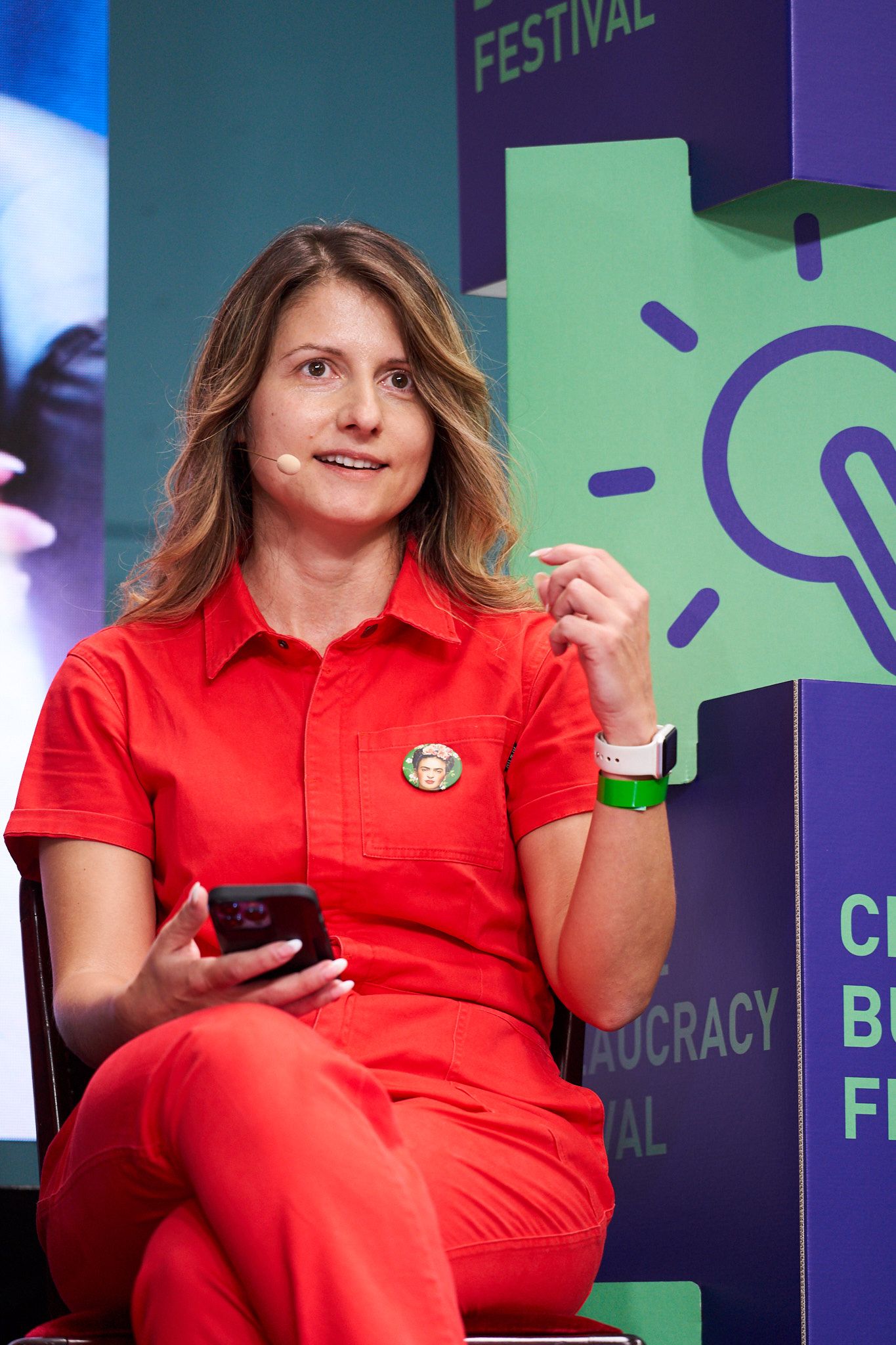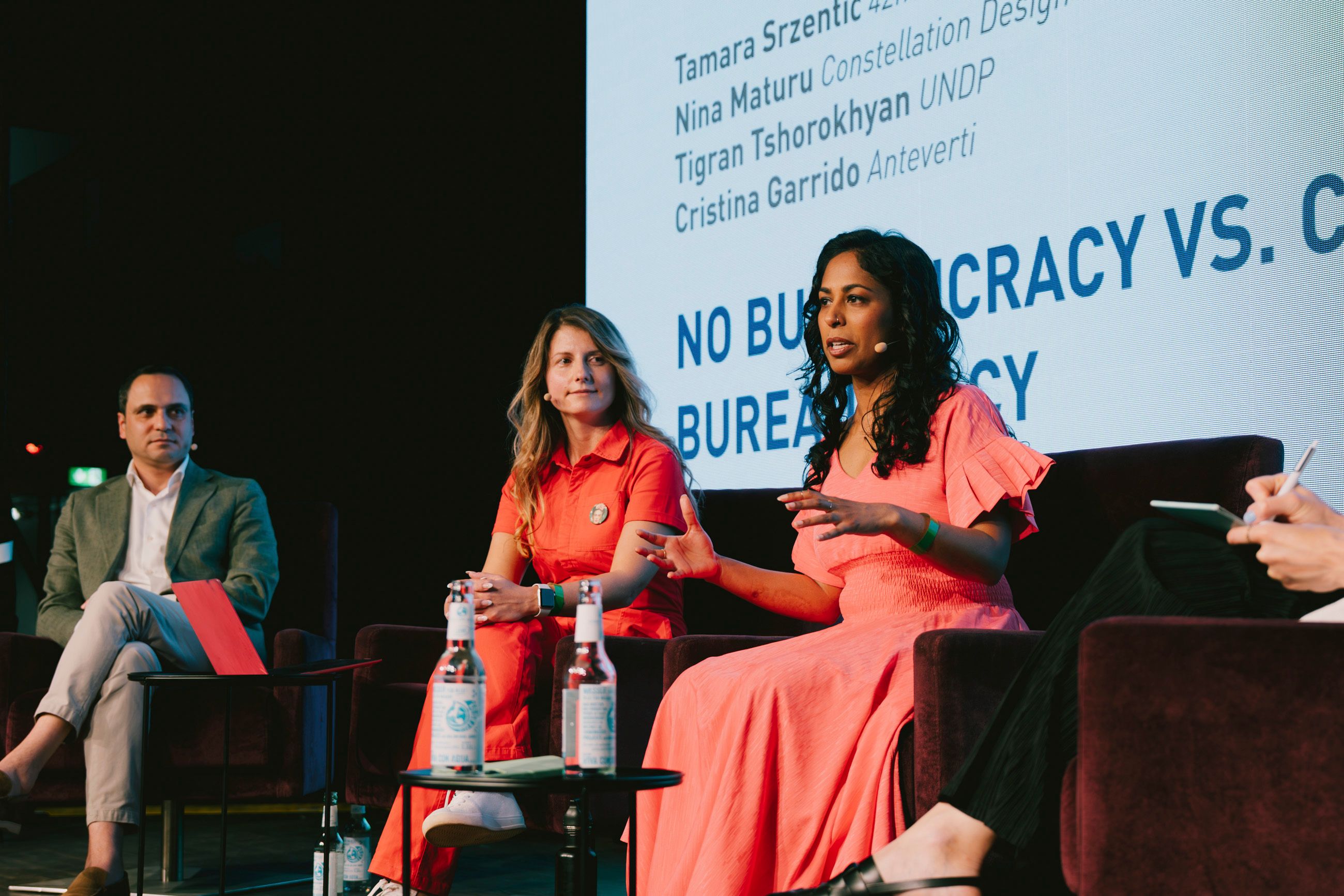From memos to demos: On how governments can hack bureaucracy
By Si Ying Thian
Global public sector leaders at the Creative Bureaucracy Festival shared how quick wins, multidisciplinary teams and a product management approach have helped hack bureaucracy in their governments.
-1750996601594.jpg)
Tech and AI are so disruptive today that there seems to be an increasing trend among governments to eliminate bureaucracy, said urban innovation consultancy Anteverti’s CEO, Cristina Garrido. Image: Creative Bureaucracy Festival
Digitalisation appears to be challenging the entrenched nature of government bureaucracy.
Technology and artificial intelligence (AI) are so disruptive today that there seems to be an increasing trend among governments to eliminate bureaucracy, said urban innovation consultancy Anteverti’s CEO, Cristina Garrido.
These governments included Estonia’s 0% “bureaucrazy” movement and United Arab Emirates (UAE)’s zero bureaucracy programme to leverage technology to reduce unnecessary government processes.
Should we eliminate government bureaucracy altogether, or reimagine it to make it “more creative, inclusive and fun”?
Garrido posed this question to her panel titled No Bureaucracy vs. Creative Bureaucracy at the Creative Bureaucracy Festival.
GovInsider was invited as a media partner to the event in Berlin, Germany, on June 5.
The panelists included Montenegro’s former digital minister, the US’ former White House presidential fellow, as well as UNDP’s innovation and SDG finance portfolio manager based in Armenia.
To subscribe to the GovInsider bulletin, click here.
Quick and small wins to gain political capital
Instead of building everything from scratch, adopting open-source tech and building digital public infrastructure (DPI) is one way to win fast by showing results.

Montenegro’s former Minister of Public Administration, Digital Society and Media, Tamara Srzentić, noted that by showing noticeable improvements in a relatively short period, ministers were able to increase their political capital within the cabinet, obtain a bigger budget and so on.
She was her country’s first digital minister and was involved in government technology work in the previous two California administrations. Her team led California’s digital response during the Covid-19 pandemic.
West Java's Jabar X-Road platform - a data exchange platform adapted from Estonia's model - serves as a strong example of how open-sourcing can quickly advance digital innovation in government.
“Learning and researching are the main keys to innovation amid our very limited budget posture. I always direct my friends [at Jabar Digital Service] to innovate without creating new budget lines," says West Java Province's Head of Communication and Informatics, Ika Mardiah, to GovInsider previously.
UNDP’s Innovation and SDG Finance Portfolio Manager, Tigran Tshorokhyan, echoed the effectiveness of quick wins.
He noted, from his experience working with a few public agencies in Armenia, that the public sector prioritises results above all else, rather than the innovative methods it takes to get there.
“When you ensure the results, they start coming to you exploring the ways you have done it,” he explained.
Citing a project between UNDP the Armenia’s Ministry of Health to boost cancer screenings uptake in underserved areas, UNDP applied a behavioral change technique by simply sending one letter and one reminder to the eligible population.
This increased participation in cancer screenings sixfold, he said. After having proved tangible outcomes and gained the trust of the ministry, UNDP has since scaled up the initiative.
Product management approach puts users first
How many times have you called customer service and explained your problem, only to be met with “that's not how we do things” or “that's just the process"?
Former White House Presidential Innovation Fellow, Nina Maturu, highlighted this example as a fundamental failure of bureaucracy.
“So many times, we get so caught up in the process that's bureaucracy that we forget the means in which it's supposed to be supporting,” she explained.

As a designer advocating for human-centred approach to seeding innovations, Maturu was part of a programme that brought in top innovators from the private sector to work on high-impact public sector projects in the US.
She previously worked on emerging health tech and utilised AI to map human trends that shaped space exploration through 2050.
Another piece of advice given by Montenegro’s Srzentić to “untangle bureaucracies” was to bring policymakers and technologists to the same table.
She observed that governments around the world are increasingly hiring more product managers and embracing a design thinking approach to developing innovative solutions.
This meant “moving from goals and projects to focusing on citizen needs and outcomes”, as well as “incrementally building [the product] and creating that feedback loop.”
She emphasised that these approaches should not only be applied in digital products, but also to policies and programmes.
Even though she acknowledged the difficulty of getting the entire organisation on board, she found that bringing onboard multidisciplinary teams and test-and-learn approaches have made it easier to introduce innovations into the public sector.
UNDP’s Tshorokhyan shared more about his team’s experience having tested two tracks to seeding innovations: Starting small or starting with systems.
While both tracks have proven effective, he noted that the systemic approach presented a significant challenge when it comes to helping communities develop the skills and understanding needed for system-wide improvements.
This is especially so for developing countries like Armenia, he noted.
For these larger changes to succeed, it remains crucial to still secure the buy-in and develop the capabilities of the end users, he said.
Quick and small wins can help build trust with policymakers, encouraging them to experiment more, learn from mistakes, as well as to adopt a product management approach to co-create with end-users - effectively hacking bureaucracy for better outcomes.
